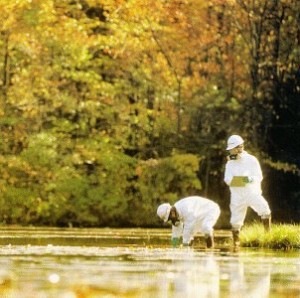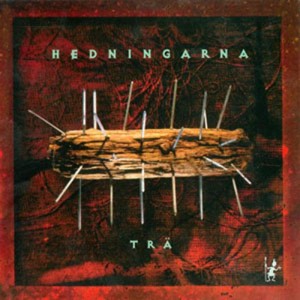 If Gjallarhorn is cool and crisp like a late winter day, Hedningarna is a winter day when the storm is raging. Dirty Linen said of them — ‘Only a few bands really seem to define their own genre, but Hedningarna is definitely one of them.’ This is not your grannie’s folk music — this is folk music filtered through a rock sensibility, and blended with the feel of a rave. As the Northside Web site notes — ‘Setting their sights toward the heart of music they lay bare their musical roots. With Hippjokk the connections between traditional music sessions and raves become apparent — at both there’s music, dancing and revelry far into the night. Everything moves to the same beat, and afterwards, there are pleasant memories without anyone remembering exactly what happened’ This is not concert music, this is dance music. Hedningarna is a group that plays astonishing modern pagan music from Sweden and Finland. They play electrically amplified music on self-made medieval acoustic instruments. Think Blowzabella with more of a rock edge.
If Gjallarhorn is cool and crisp like a late winter day, Hedningarna is a winter day when the storm is raging. Dirty Linen said of them — ‘Only a few bands really seem to define their own genre, but Hedningarna is definitely one of them.’ This is not your grannie’s folk music — this is folk music filtered through a rock sensibility, and blended with the feel of a rave. As the Northside Web site notes — ‘Setting their sights toward the heart of music they lay bare their musical roots. With Hippjokk the connections between traditional music sessions and raves become apparent — at both there’s music, dancing and revelry far into the night. Everything moves to the same beat, and afterwards, there are pleasant memories without anyone remembering exactly what happened’ This is not concert music, this is dance music. Hedningarna is a group that plays astonishing modern pagan music from Sweden and Finland. They play electrically amplified music on self-made medieval acoustic instruments. Think Blowzabella with more of a rock edge.
About ten years ago, Hedningarna was formed by Hållbus Totte Mattson, Anders Stake and Björn Tollin, who made their first album, Hedningarna, in 1990. They added the two Finnish singers Sanna Kurki-Suonio and Tellu Paulasto, so that on the Kaksi (1992) and Trä (1994) albums, there are five members. On the album Hippjokk (1997), Hedningarna was a trio again with the founding members, plus session musicians, including the always amazing Lapp jojker Wimme Saari. (Saami folk music is called jojk and is a singing style where melody and verse are of equal weight. Jojk is often improvised while singing and can express feelings of deep sorrow, heart-felt hate or deep love. To sing jojk means deeply identifying yourself with someone or something important to you.) The most recent release, Karelia Visa, has the trio back playing with Ulf Ivarsson and the two wonderful Finnish singers again (with Tellu being replaced by Anita Lehtola).
 The unofficial Hedningarna Web site which is now defunct notes that ‘Hedningarna’s sound is suggestive and heavy, and is marked by drone stringdrums with dark sounds and instruments such as the fiddle, bagpipe, hurdy-gurdy, bowed harp, keyed fiddles, and synthesisers. The instruments which create the melody, are, among others, the bagpipe, willow flutes, kantele, fiddle, lute and electric guitar. Many songs are built around a heavy rock-like drum beat, which are played live on ‘pads’ which control a sampler programmed with drum sounds. In addition to this come other sounds, as in the Trä album where samples of a jojk, wind, running water and a motor saw can also be heard.’ I was serious when I said they sounded like Blowzabella with a rockier edge to them — this is folk music on acid. If you like your music very electrified, you’ll like this group. Hippjokk and Trä are more or less the same in the way that sound. It wasn’t ’til Karelia Visa that they broaden out their sound to include the Finno-Russian sound of the Karelian region.
The unofficial Hedningarna Web site which is now defunct notes that ‘Hedningarna’s sound is suggestive and heavy, and is marked by drone stringdrums with dark sounds and instruments such as the fiddle, bagpipe, hurdy-gurdy, bowed harp, keyed fiddles, and synthesisers. The instruments which create the melody, are, among others, the bagpipe, willow flutes, kantele, fiddle, lute and electric guitar. Many songs are built around a heavy rock-like drum beat, which are played live on ‘pads’ which control a sampler programmed with drum sounds. In addition to this come other sounds, as in the Trä album where samples of a jojk, wind, running water and a motor saw can also be heard.’ I was serious when I said they sounded like Blowzabella with a rockier edge to them — this is folk music on acid. If you like your music very electrified, you’ll like this group. Hippjokk and Trä are more or less the same in the way that sound. It wasn’t ’til Karelia Visa that they broaden out their sound to include the Finno-Russian sound of the Karelian region.
(Northside, 1997 for both releases)
